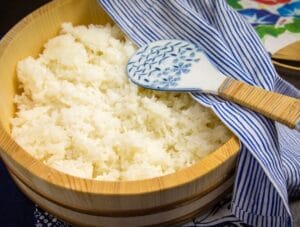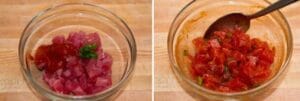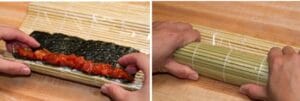As a food blogger at Food And Meal, I love experimenting with new recipes and flavors. Recently, I’ve become quite enamored with sushi, especially spicy tuna dragon rolls. There’s something about the combination of flavors and textures that really excites my palate.
I still remember the first time I tried spicy tuna dragon rolls at my local sushi restaurant. The spicy mayonnaise paired beautifully with the soft, tender tuna, and the nori added a lovely ocean-like aroma. I was hooked after the first bite! Ever since then, I’ve been on a mission to recreate that magical spicy tuna roll at home.
After much trial and error, I’m thrilled to share my perfected spicy tuna maki recipe with my readers today. I infused my mayonnaise with Sriracha to achieve that addictive spicy kick. And I finely chopped my tuna instead of using canned to maximize the soft, melt-in-your-mouth texture I was craving.
Best Spicy Tuna Dragon Roll Recipes
Spicy tuna maki roll is an excellent choice for lunch. It’s a delicious combination of tuna and spicy mayo. This Japanese staple is easy to make and goes great with a variety of other fish and vegetables. Whether you prefer to make your own or order it at a restaurant, you’ll enjoy it! Soak it in soy sauce before rolling it. Then, slice it and add the toppings.
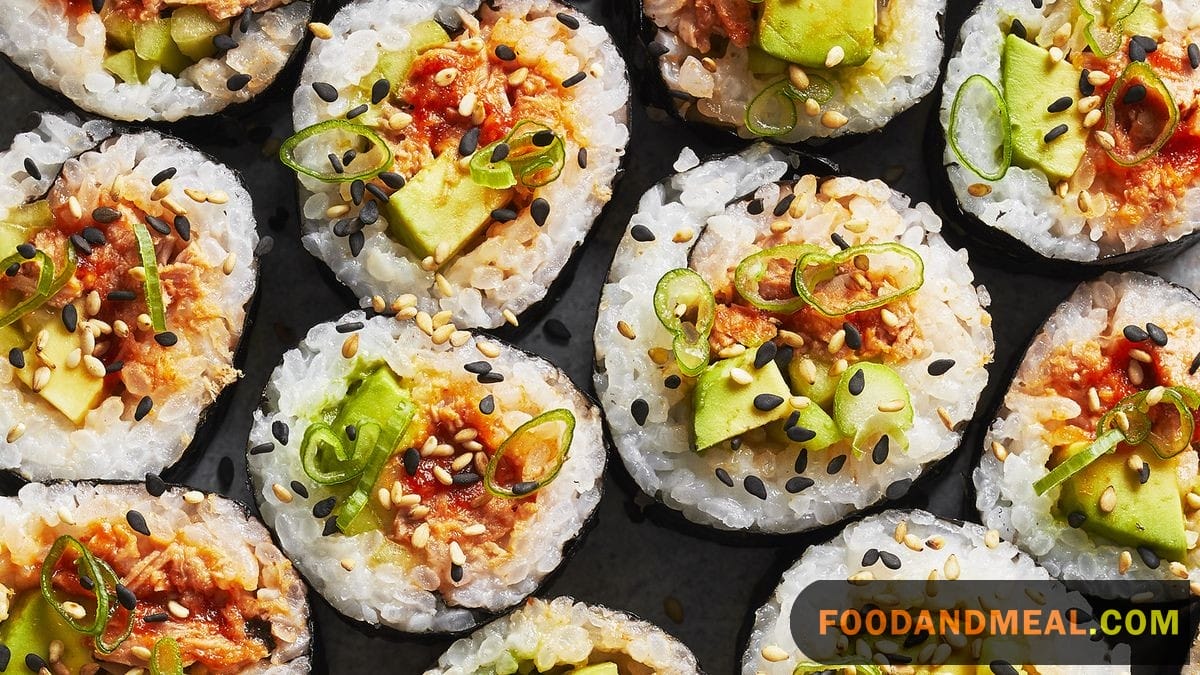
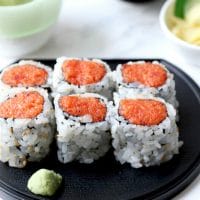
Spicy Tuna Maki
Ingredients
- 4 sheets nori cut in half crosswise
- 2 cups sushi rice
- Sushi ginger
- Wasabi
- Soy sauce
For filling
- 5 ounces ahi tuna yellowfin or bigeye, Sashimi-grade, finely chopped
- 2 tablespoons green onions minced
- 2 tablespoons mayonnaise
- 1 tablespoon hot sauce
Instructions
- Combine the ingredients for the filling in a bowl and mix well.

- Follow the steps for making sushi for an inside-out roll, up to step

- Boil the rice in high heat. When the steam comes out, open the lid and bring the flame into a medium flare then cook for about 10 minutes more. After 10 minutes, lower the heat again and wait up to 10 minutes more then remove from stove.

- Proceed up to step 5 (do not cut yet).

- Before cutting, remove the plastic wrap and set the roll aside, covering with a damp cloth while you work to finish the remaining rolls.

- Cut the roll in half, then into thirds so each roll results in 6 pieces.

- Serve with sushi ginger, wasabi, and soy sauce

Video
Notes
Nutrition
© Food And Meal
This website provides approximate nutrition information for convenience and as a courtesy only. Nutrition data is gathered primarily from the Spoonacular Database, whenever available, or otherwise other online calculators.
Spicy Tuna Rolls Bowl
Spicy Tuna Dragon Roll Bowl, a dish that balances the warmth of spice with the cool freshness of the sea, is a culinary experience that can elicit a range of emotions and sensory reactions. The dish typically starts with a base of sushi rice, which is vinegared and subtly sweet, providing a comforting canvas for the flavors that are to follow. The rice’s stickiness is an essential characteristic, as it holds together the other ingredients and offers a satisfying texture.
Atop this foundation, one would find succulent pieces of spicy tuna. This key component is often made with sashimi-grade tuna that has been finely chopped or sliced and then mixed with a fiery blend of spices and seasonings, such as chili sauce, mayonnaise, and perhaps a touch of sesame oil. The contrast between the cool, rich tuna and the warm, tingling sensation of the spices creates a delightful push-and-pull on the palate. It’s a harmonious interplay that can invoke a sense of excitement and comfort with each bite.
Accompanying the spicy tuna, there’s usually a medley of vegetables—sliced cucumber, shredded carrot, and daikon radish—which provide a refreshing crunch and help to temper the heat from the tuna. These vegetables add not only a textural contrast but also a visual appeal with their vibrant colors, making the bowl as pleasing to the eye as it is to the taste buds.
Garnishes such as avocado slices, seaweed strips, sesame seeds, or tobiko (flying fish roe) might be sprinkled on top for an extra layer of complexity. The avocado adds a creamy richness that can soothe the tongue after the kick from the spice, while the seaweed offers a whisper of the ocean with its salty and umami notes.
Spicy tuna roll cooked or raw ?
Spicy tuna rolls can be made with either raw or cooked tuna. As a food lover, I enjoy the flavor and texture of both versions!
Raw spicy tuna has a soft, velvety texture that practically melts in your mouth. The flavor is mild and clean, allowing you to fully taste the fresh fish. It makes for a refreshing roll with a nice hit of spicy heat. I love the simplicity of good quality raw fish paired with spicy mayo and crunchy vegetables or rice.
Cooked spicy tuna is also delicious, with a pleasantly firm texture that holds up well in a roll. Cooking intensifies the savory umami flavors of the tuna and allows it to absorb more of the spicy seasonings. It has a heartier, more indulgent quality compared to the raw version. I’m partial to seared peppered tuna with a spicy mayo drizzle – so good!
Can Pregnant Women Eat Spicy Tuna Maki ?
Pregnant women may eat spicy tuna maki in moderation, but should take some precautions. The main concerns with raw fish like tuna are mercury exposure and foodborne illnesses. However, the amount of tuna in a maki roll is relatively small.
So, Can I eat spicy tuna roll while pregnant? As long as the tuna comes from a reputable source and is properly handled and stored, the mercury risks are low. Some spicy tuna recipes also cook or sear the tuna, further reducing risks.
The bigger issue can be that spicy tuna maki contains raw fish, and pregnant women are advised to avoid raw seafood due to the risk of foodborne illnesses like salmonella and listeria. These illnesses can be especially dangerous during pregnancy. So I would advise caution and checking with your doctor, but a California roll or veggie maki are safer options if you are worried.
Pro Tips for making Spicy Tuna Maki
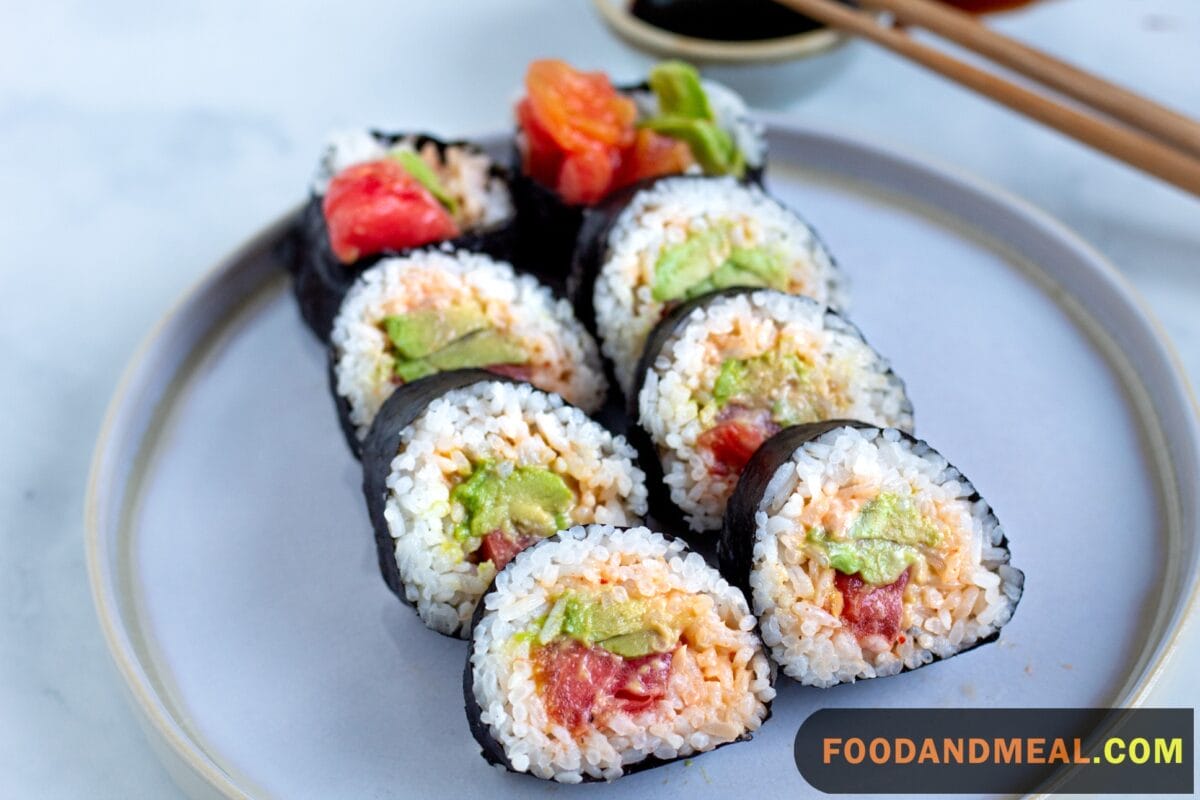
Serving Suggestions
The spicy tuna dragon rolls would pair nicely with some light and refreshing sides like edamame, seaweed salad, or miso soup. For something heartier, yakisoba noodles or tempura vegetables would also complement the flavors.
If you wanted to add another sushi item to the meal, sashimi or nigiri would let the fresh tuna shine. Or for more rolls, try balancing out the spiciness with something mild like kappa maki cucumber rolls or shake salmon rolls.
For beverage options, green tea is a classic pairing with sushi. Iced tea or Asian beers like Sapporo would also work well. Or play up the spicy component with a glass of chilled sake.
I stuck to traditional Japanese pairings to fit with the theme of the spicy tuna maki. But feel free to get creative and try the rolls alongside your favorite salads, grains, or veggies! The possibilities are endless for customizing a delicious and healthy meal around this sushi star.
Cooking notes
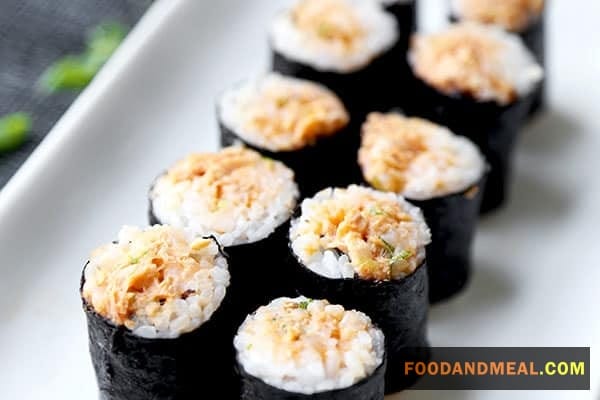
To begin with, selecting the right tuna is paramount. One should look for fresh, sashimi-grade tuna, which not only ensures safety when consuming raw but also promises the best flavor and texture. There’s a certain reverence that comes with handling such a fine ingredient, a respect for the produce and the journey it has taken from the ocean to the kitchen.
The rice is the next critical element. Preparing sushi rice requires patience and attention to detail. The rice must be washed with care until the water runs clear, then cooked to just the right level of doneness—tender but not mushy. Seasoning the rice with the right balance of vinegar, sugar, and salt is an art in itself, one that can evoke a sense of pride when achieved perfectly.
When it comes to spicing the tuna, personal preference plays a significant role. The heat level can be adjusted to suit one’s taste, but it’s important to find a harmony between the spice and the natural, subtle sweetness of the tuna. Mixing the fish with chili sauce and mayonnaise creates a creamy, spicy coating that should complement rather than overpower the tuna. A hint of sesame oil can add depth and an aromatic quality that gently whispers to the senses.
Assembling the maki is where the fun truly begins. Laying out the nori sheet, spreading the rice evenly, and then adding the spicy tuna mixture requires a gentle touch. It’s a moment filled with anticipation, as one imagines the finished roll and the joy it will bring. Rolling the maki tightly, ensuring all components are snugly embraced by the nori, can be a meditative practice, a brief escape from the hustle and bustle of daily life.
Finally, slicing the roll into even pieces is the last step before indulgence. The knife glides through the roll, revealing the colorful cross-section of the Spicy Tuna Dragon Roll—a moment of triumph and satisfaction.
Top 9 FAQs about Tuna Maki Maki
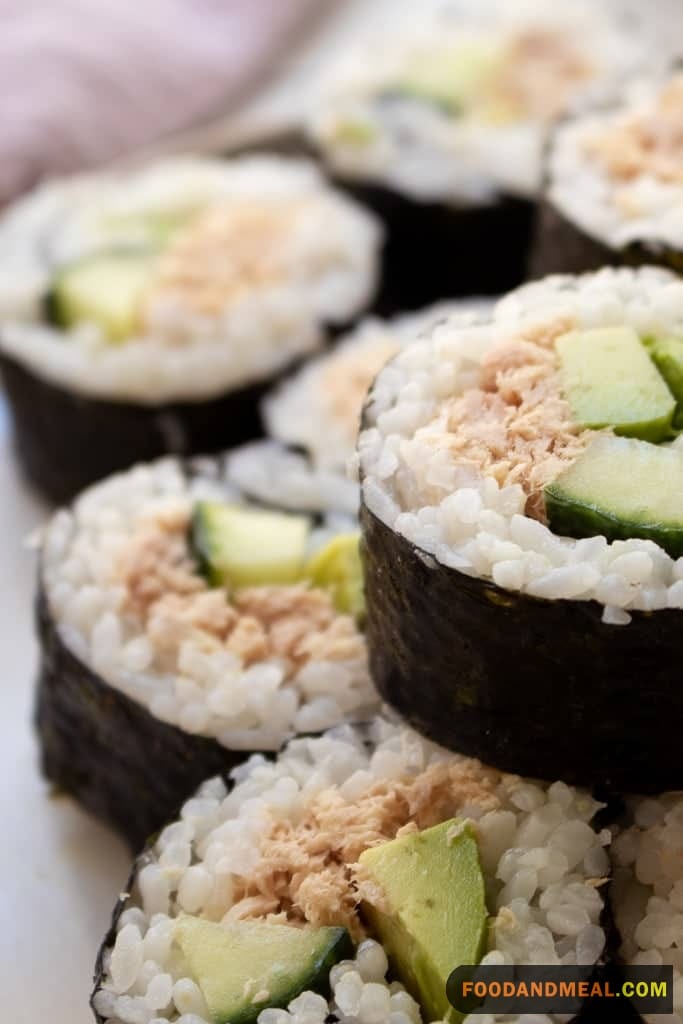
- Can I use canned tuna for the Spicy Tuna Dragon Rolls Bowl? Yes, canned tuna can be used, but fresh or frozen tuna is recommended for a superior taste and texture. If using canned tuna, make sure it’s well-drained.
- How can I adjust the spiciness of the Spicy Tuna Rolls Bowl? You can control the spiciness by adjusting the amount of sriracha sauce in the spicy mayo. Start with a small amount, taste, and add more to reach your desired level of heat.
- What can I substitute for mayonnaise in the spicy tuna mixture? If you prefer a healthier alternative, you can use Greek yogurt or a dairy-free mayonnaise. It maintains the creamy texture while reducing the fat content.
- Can I make a vegetarian version of the Spicy Tuna Maki Bowl? Certainly! You can substitute the tuna with marinated and seared tofu, or use other plant-based alternatives like jackfruit or tempeh for a vegetarian option.
- How should I store leftovers of the Spicy Tuna Dragon Rolls Bowl? To keep your leftovers fresh, store them in an airtight container in the refrigerator for up to 24 hours. However, for the best quality, it’s recommended to enjoy your Spicy Tuna Maki Bowl on the same day you prepare it.
- Is spicy tuna Maki healthy? Spicy Tuna Maki can be a healthy option as tuna is a good source of protein and omega-3 fatty acids. However, the overall healthiness depends on the ingredients used, such as the rice and the amount of spicy mayo.
- Is spicy tuna roll good for beginners? Spicy Tuna Roll can be a bit intense for beginners due to the spiciness. However, it’s a popular choice and a great way to explore different flavors in sushi.
- What is the difference between spicy tuna dragon roll and California roll? The primary difference lies in the ingredients. Spicy Tuna Roll contains spicy tuna filling, while California Roll typically includes imitation crab, avocado, and cucumber. Additionally, Spicy Tuna Roll has a kick from spicy mayo.
- Do they have spicy tuna in Japan? Yes, spicy tuna is available in Japan, but it’s not as common as traditional sushi options. Spicy variations have gained popularity globally, influenced by international tastes.
Conclution
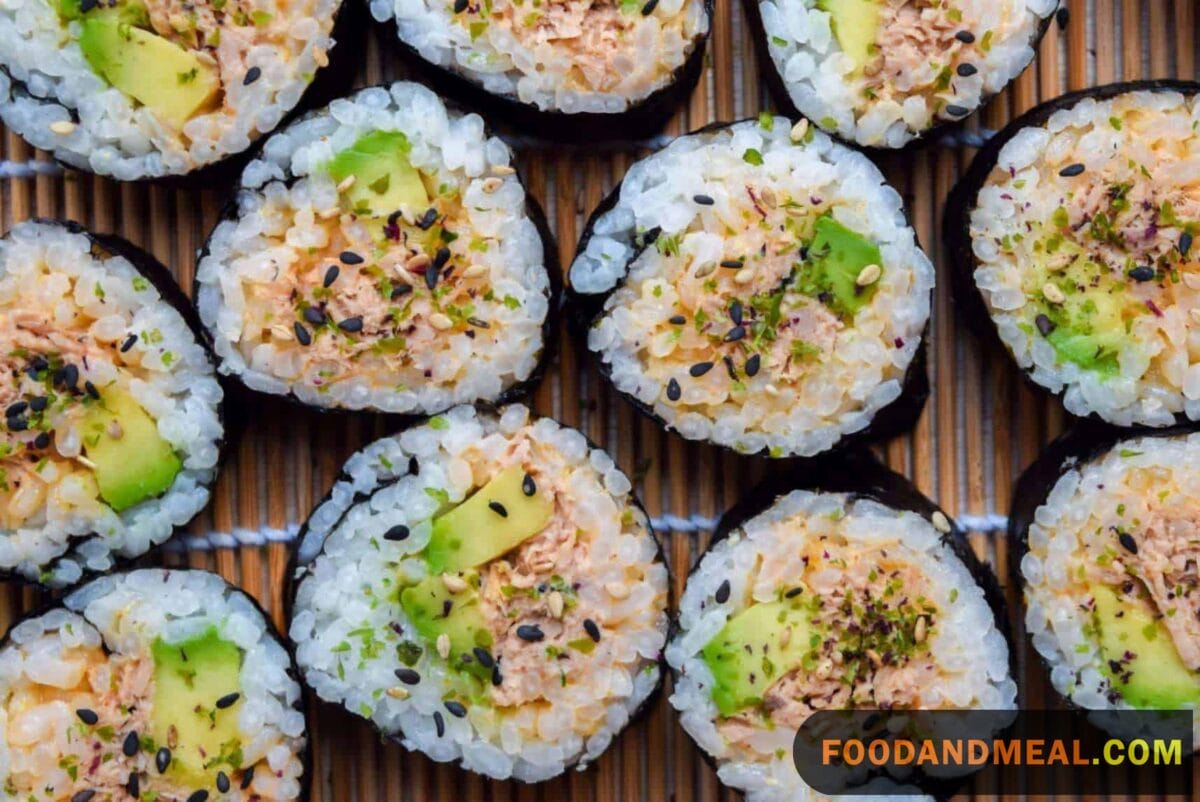
I hope you’ll take the plunge and try making these spicy tuna dragon rolls at home. It’s an extremely satisfying cooking project that will make you feel like a sushi master. Play around with different fillings or creative garnishes to put your own signature touch on this classic roll.
While homemade sushi does require some special equipment and a few new techniques, don’t let that intimidate you. Take it slow your first time, and I promise you’ll be churning out professional-level sushi in no time.
Let me know in the comments how your spicy tuna maki turns out! I’d love to hear your tweaks and modifications. And if you have any other sushi recipes you’d like to see on the blog, suggestions are always welcome.
Thanks for rolling through this spicy tuna journey with me today. Now grab your bamboo mat and get rolling!
Contentedly stuffed, James
I'm James F Anderson, a noted sous chef from London and a Le Cordon Bleu alumnus. My career began in a Michelin-starred Parisian eatery, where my blend of classic and contemporary cooking, using seasonal ingredients, earned accolades. Recognized in culinary publications and on cooking shows, I’m committed to mentoring aspiring chefs and delivering memorable dining experiences, marking me as a standout talent in the culinary world.





